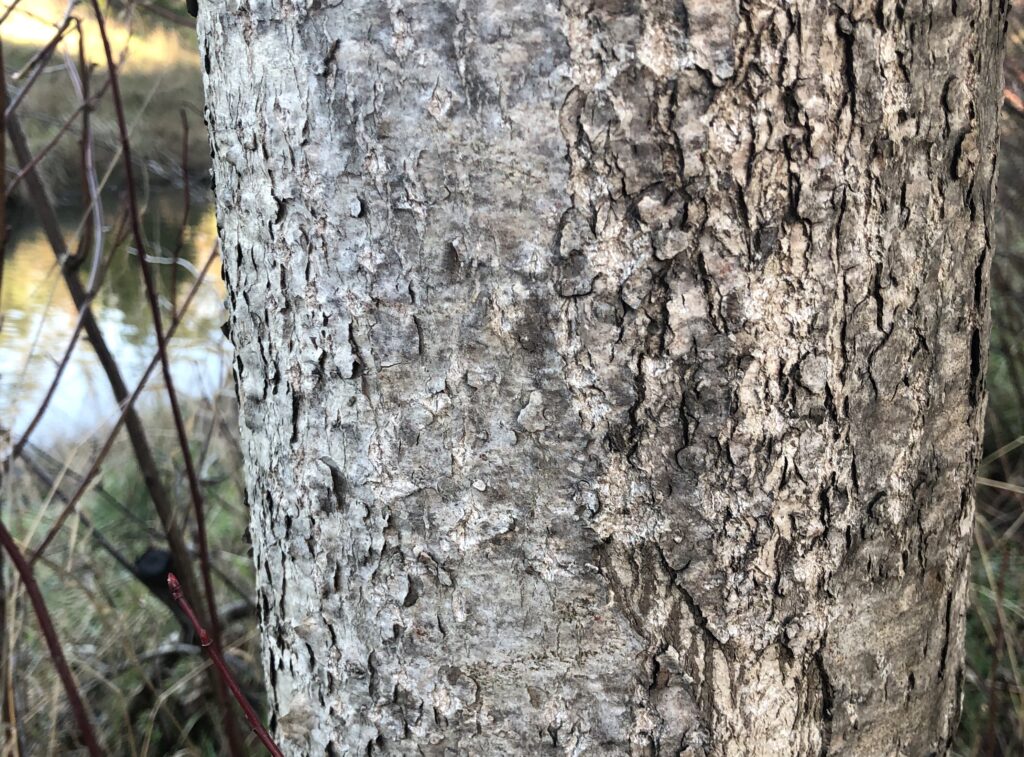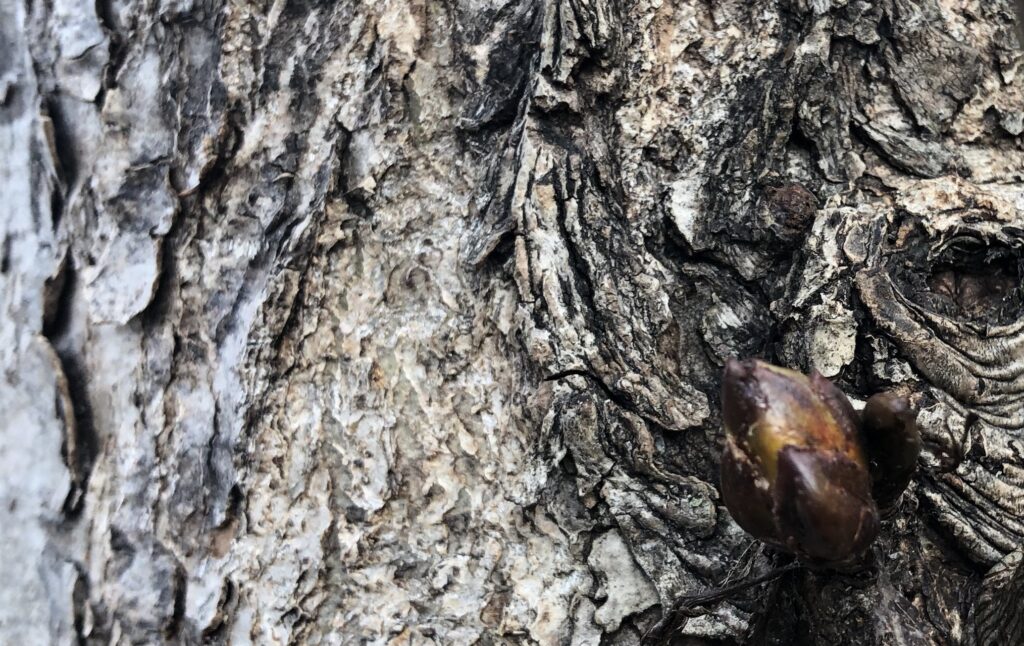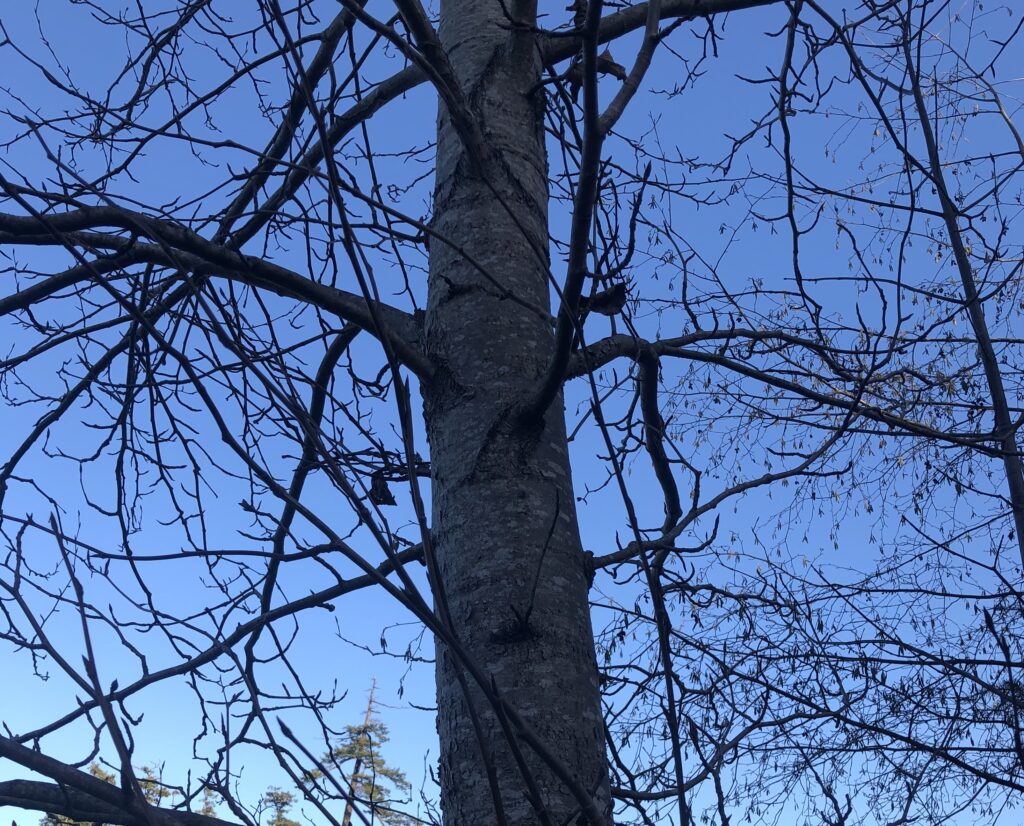Red Alder (Alnus rubra)

The Red Alder (Alnus rubra) is an important native species common in British Columbia. This tree, belonging to the Birch family, is considered medium-sized and capable of reaching a maximum height of 24-25 metres tall. The bark is a useful identifier for the species; it is scaly, often covered in lichen and ranges in color from green (young bark) to greyish-white (old bark). It is important to note that any reddish-orange hues come from the inner bark when exposed to the outside. The smooth, alternately-arranged leaves have veins that appear to be arranged like a ladder. The leaves are also oval, pointed and have toothed edges (that may curl downwards). The two sides of the leaves differ in color, the underside has a grey hue while the topside is green. The Red Alder produces either male or female flowers, the former seen with drooping red catkins and the latter, oval brown cones.

The Red Alder was used for a variety of purposes by Indigenous peoples. Primarily these were textile and material use, however some coastal groups used a layer of the tree (cambium) for food. Colouring from the tree ranged from black, brown to orange-red and was used for dyeing (e.g. wood, wool, baskets, feathers, human hair and skin). The wood was also useful for smoking meat and creating carvings.

The Red Alder can be found all throughout the British Columbia coast and south to California, as well as into areas of Alaska. This Alder seeks out nitrogen-rich soils in temperate lowlands or mountainous regions. A Red Alder is likely to be found near streams or water sites, woodlands, forests, floodplains or clearings and outside of heavy shade. Living only 40-60 years, the tree is critical for soil health as it converts nitrogen into a plant-ready form using a symbiotic relationship with a bacterial organism in its roots.
For more information, visit E-Flora BC or the B.C. Ministry Tree Book.


